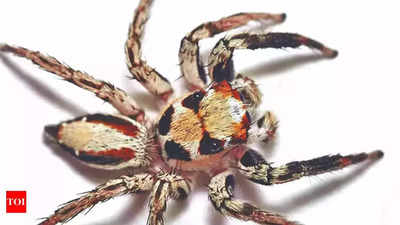In the diverse world of arachnids, the largest spiders stand out due to their size and unique characteristics. Spanning species from the Goliath birdeater to the giant huntsman, these spiders exhibit a wide range of sizes, habitats, and behaviours. Though they may seem intimidating, these spiders play essential roles in their ecosystems and are the focus of considerable scientific study.
Discover the biggest spiders in the world . The Goliath birdeater is recognized as the largest spider by weight and size, native to South America's rainforests. It has a body size comparable to a mid sized smartphone and a leg span of up to 12 inches (30 centimetres).

Despite its name, it rarely eats birds and primarily preys on insects, frogs, and small mammals. Its defence mechanism includes releasing irritant hairs and making a distinct sound by rubbing its legs together. Known for its large leg span of up to 12 inches (30 centimetres), the giant huntsman spider was discovered in Laos.
It does not build webs but hunts actively, exhibiting impressive speed and agility. Although its appearance may be intimidating, it generally avoids human contact and is not dangerous to humans. The Brazilian salmon pink birdeater, with a leg span of up to 10 inches (25.
4 centimetres), is notable for its large size and striking salmon-pink hair. This spider is relatively docile, with venom that is mild to humans. The Hercules baboon spider, native to Africa, is one of the largest tarantulas, with a leg span estimated around 8 inches (20.
3 centimetres). Despite its formidable name, it is more reclusive and rarely seen, with its true size and habits remaining somewhat mysterious. The Colombian giant redleg tarantula features a leg span of up to 8 inches (20.
3 centimetres) and is known for its velvety black body with reddish hairs. It is burrower and generally calm, with venom that poses little threat to humans. Discovered in Sri Lanka, the Poecilotheria Rajaei is recognized for its beautiful, intricate patterns and arboreal lifestyle.
Its leg span can reach up to 8 inches (20.3 centimetres), and while it is visually striking, it has potent venom. The Brazilian giant tawny red tarantula, found in Brazil, has a leg span of up to 7 inches (17.
8 centimetres) and is distinguished by its tawny-red coloration. Despite its imposing appearance, it is relatively docile and prefers to live in burrows. The Colombian blue bloom tarantula features a leg span of up to 7 inches (17.
8 centimetres) and is known for its striking blue coloration. It is more of a display species, thriving in tranquil environments. The Colombian lesserblack tarantula, with a leg span reaching up to 7 inches (17.
8 centimetres), is notable for its deep black body and vibrant patches. It is relatively docile but requires careful handling due to its size and strength. Do snakes really hear? A research unveils their true hearing capabilities.



















